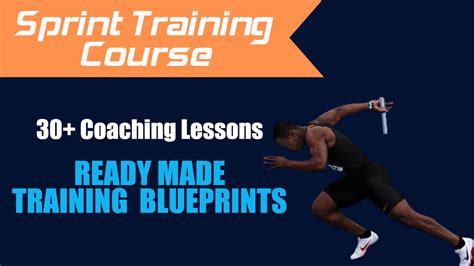How To Train For The 400 Meter
Ronan Farrow
Mar 20, 2025 · 3 min read

Table of Contents
How to Train for the 400 Meter: A Comprehensive Guide
The 400 meters is a grueling race, demanding a unique blend of speed, endurance, and tactical awareness. It's often called the "quarter-mile," and mastering it requires a dedicated training regimen. This guide will outline a comprehensive approach to training for the 400m, covering everything from planning your workouts to recovery strategies.
Understanding the 400m: Speed and Endurance
The 400m isn't just a sprint; it's a high-intensity endurance event. You need explosive speed for the initial burst but the stamina to maintain a fast pace throughout the race. Unlike a 100m or 200m, pacing is crucial. Burning out too early is a common mistake.
Key Training Components:
- Speed Work: This forms the foundation of your 400m training. Think short, fast sprints with ample rest to fully recover. Examples include:
- 200m repeats: Run at 85-95% effort with a recovery jog between each.
- 100m repeats: Focus on maximizing speed over short bursts.
- Fly 10s: Short, all-out sprints designed to build explosive power.
- Endurance Training: Building stamina is essential to preventing your pace from dropping drastically in the later stages of the race. Include:
- 400m repeats: Run at race pace or slightly faster. The number of repeats depends on your training level.
- 800m repeats: These help build lactic acid tolerance, crucial for maintaining speed during the later stages of your 400m race.
- Tempo runs: Sustained runs at a comfortably hard pace.
- Strength and Conditioning: Strength training is often overlooked, but it significantly boosts performance by improving power and reducing injury risk. This can include:
- Plyometrics: Exercises like box jumps and jump squats enhance explosive power.
- Weight training: Focus on compound exercises like squats, deadlifts, and lunges to develop overall strength.
- Core work: A strong core is essential for proper running form and stability.
Building Your Training Plan: A Sample Week
Remember to consult a coach or athletic trainer to personalize a training plan based on your individual needs and goals. The following is a sample weekly plan, not a prescription:
Monday: Rest or Active Recovery (light jog, stretching)
Tuesday: Speed Work (200m repeats)
Wednesday: Strength Training (focus on legs and core)
Thursday: Endurance Work (400m repeats)
Friday: Speed Work (100m repeats)
Saturday: Long run (easy pace) or cross-training
Sunday: Rest or Active Recovery
Pacing Strategies and Race Day Tactics
Understanding pacing is vital for success in the 400m. Many runners make the mistake of going out too fast in the beginning. A good strategy is to start strong but controlled, maintaining a pace you can sustain for the entire race. The final 100m is where true grit is tested – digging deep to overcome fatigue and push through to the finish line.
Nutrition and Hydration
Proper nutrition and hydration are key to optimal performance. Fuel your body with a balanced diet rich in carbohydrates for energy and protein for muscle repair. Stay hydrated throughout the day, especially leading up to and following your workouts.
Recovery is Key
Allow your body sufficient time to recover between intense workouts. This includes getting enough sleep, stretching, and potentially incorporating foam rolling or other recovery methods. Listening to your body is critical; don't push through pain.
Monitoring Progress and Adjusting Your Plan
Track your progress consistently, noting your times and how your body feels. This data allows you to adjust your training plan as needed, ensuring you're always challenging yourself while avoiding overtraining.
By following a structured training plan that incorporates speed work, endurance training, strength and conditioning, proper nutrition and recovery, you can significantly improve your 400m performance. Remember consistency, patience, and listening to your body are key to success. Good luck!
Featured Posts
Also read the following articles
| Article Title | Date |
|---|---|
| How Do I Clean A Wax Jacket | Mar 20, 2025 |
| How To Wear Belts With Jeans | Mar 20, 2025 |
| How To Trap A Pack Rat | Mar 20, 2025 |
| How Big Is 12x16 Poster | Mar 20, 2025 |
| Fluoride Treatment How Long To Eat | Mar 20, 2025 |
Latest Posts
Thank you for visiting our website which covers about How To Train For The 400 Meter . We hope the information provided has been useful to you. Feel free to contact us if you have any questions or need further assistance. See you next time and don't miss to bookmark.
